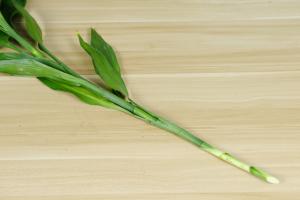How Far Apart to Plant Dwarf Fruit Trees
Dwarf fruit trees are a great option for those who want to have fruit trees in their home gardens, but have limited space. They are smaller in size than traditional fruit trees, making them easier to maintain and harvest. When it comes to planting dwarf fruit trees, one of the most important factors to consider is the spacing between trees. In this article, we will discuss how far apart to plant dwarf fruit trees to ensure healthy growth and optimal fruit production.
Consider the Root System
Before planting dwarf fruit trees, it is important to consider their root systems. Unlike traditional fruit trees, which have deep root systems, dwarf fruit trees have shallow root systems. This means that they require less space to grow, but also need to be spaced out to avoid competing for water and nutrients.
When planting dwarf fruit trees, it is recommended to space them about 8-10 feet apart. This distance will allow the trees to grow and develop a healthy root system without being too close together. If you have limited space, you can also consider planting them in containers or raised beds.
Consider the Tree's Height and Canopy Spread
Another important factor to consider when planting dwarf fruit trees is the height and canopy spread of the tree. Different varieties of dwarf fruit trees will have different heights and canopy spreads, and it is important to take this into account when planning your orchard.
For example, dwarf apple trees can grow up to 8-10 feet tall with a canopy spread of 6-8 feet, while dwarf citrus trees can grow up to 6-8 feet tall with a canopy spread of 4-6 feet. Make sure to research your specific variety of dwarf fruit tree to determine its height and canopy spread, and then plan your planting accordingly.
When planting dwarf fruit trees, it is recommended to space them at least half the distance of their height and canopy spread. This will ensure that the trees have enough space to grow and develop healthy canopies, without crowding each other.
Consider the Soil and Sunlight Conditions
Finally, when planting dwarf fruit trees, it is important to consider the soil and sunlight conditions in your garden. Different varieties of fruit trees will have different soil and sunlight requirements, and it is important to choose varieties that will thrive in your specific conditions.
For example, most dwarf fruit trees prefer well-drained soil that is rich in organic matter. They also require at least 6 hours of sunlight per day to thrive. Make sure to research the specific soil and sunlight requirements of your chosen fruit tree variety before planting.
When planning your orchard, make sure to choose a location that has the right soil and sunlight conditions for your chosen varieties of dwarf fruit trees. This will help ensure healthy growth and optimal fruit production.
Conclusion
Planting dwarf fruit trees is a great way to enjoy fresh fruit from your own garden, even if you have limited space. When planting these trees, it is important to consider their root systems, height and canopy spread, and soil and sunlight conditions to ensure healthy growth and optimal fruit production. By following these guidelines, you can create a thriving orchard of dwarf fruit trees that will provide you with delicious fruit for years to come.

 how many times do yo...
how many times do yo... how many planted tre...
how many planted tre... how many pine trees ...
how many pine trees ... how many pecan trees...
how many pecan trees... how many plants comp...
how many plants comp... how many plants can ...
how many plants can ... how many plants and ...
how many plants and ... how many pepper plan...
how many pepper plan...
































